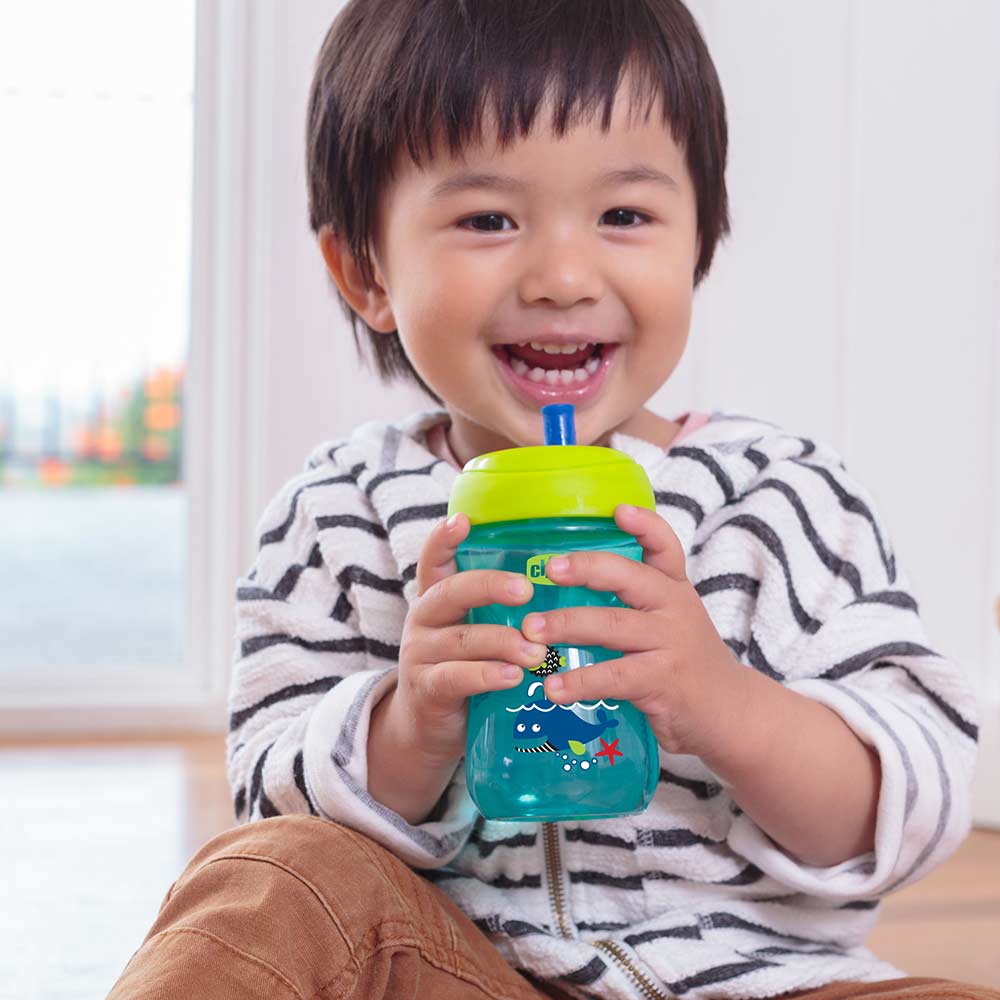
It's no secret that babies love bottles. They're easy to use and can provide a sense of comfort and security for your little one, but you don't want them to rely on a bottle forever.
Many parents struggle with deciding when to wean their baby off a bottle. After all, the switch from bottles to cups can be a big adjustment for your little one - and for you. So here are a few things for you to keep in mind as you help your baby through this transition.
The American Academy of Pediatrics (AAP) recommends phasing out bottle use between 12 and 24 months of age. However, the perfect timing can vary depending on the individual child. Your child might be ready to get started if they:
- Can easily sit up unassisted
- Are interested in solid foods
- Have no problem eating from a spoon
- Have well-established mealtime routines (especially if they eat three meals a day)
There's no shortage of reasons why weaning a baby from a bottle is best done sooner than later and ideally by the time they reach their second birthday.
Tooth Decay
For starters, prolonged bottle use can lead to early cavities as your baby's teeth develop. Breast milk and milk-based formulas both contain lactose, a type of sugar that encourages oral bacterial growth, leading to tooth decay.
Oral Development
Another issue to consider is that prolonged bottle use can affect the position of adult teeth and the development of the roof of your child's mouth (or palate). It can also affect facial muscle development. Combined, the above can increase the possibility of overbites or even speech impediments down the line.
Obesity
If your child continues to use a bottle well into toddlerhood, they're at an increased risk of obesity. A study published in The Journal of Pediatrics found that children who continued using a bottle past 24 months were 30% more likely to be obese by age five and a half.
Ear Infections
More frequent ear infections are another possible consequence of continued bottle use. When your child drinks from a bottle while lying down, the liquid can make its way to the inner ear, which increases the risk of infection.
How to wean a baby off a bottle is an age-old question, and there's a lot to consider! Start by introducing cups well before it's time to wean from the bottle (as early as six months). This way, the cup becomes a familiar object, not a replacement for the bottle. Some children will be intrigued by the cup from the start, while others will need a little more convincing. A transition cup is great during the in-between phase so that your child gets used to the size and shape of a sippy cup while still offering the comfort of a bottle with a silicone spout.
When ready to start, make sure you choose cups with handles and special sippy lids or straws. It will be easier on your child, and you can avoid the messes that come with standard cups (for now). Remember, you might need to try out a few different types of cups before you find one that works best for both of you.
Here are a few tips to get your baby on board:
Let them explore - let your child hold and play with the cup, so they have a chance to get used to it.
Encourage them to practice - put some water in the cup and let them go for it. It's okay if they make a mess or get a little damp. (And they will)!
Encourage them to drink - offer small sips of water or breastmilk from the cup during mealtimes well before weaning begins.
Be a role model - pour one for yourself during drinking time. Your little one will appreciate the solidarity!
Make it fun - try using a cup with their favorite character on it or add colorful stickers to personalize it.
Be patient - bottle weaning takes time, and every child is different. If your child gets upset about weaning, don't hesitate to give them extra cuddles!
A step-by-step approach, rather than cold turkey, will be the least stressful approach for you and your baby. If your baby has a bottle in the morning, mid-day, late afternoon, and bedtime, here's a suggested schedule for gradually weaning your baby off the bottle:
- Exchange the middle-of-the-day bottle for a cup. Keep the other daily bottles.
- Continue this for 3 to 4 days.
- Exchange the afternoon bottle for a cup (two bottles down). Keep the other daily bottles.
- Continue this for 3 to 4 days.
- Exchange the morning bottle for a cup (3 bottles down). Keep the bedtime bottle.
- Continue this for 3 to 4 days.
- Swap the bedtime bottle with a cup (bye-bye bottles)!
If your baby becomes upset at any point during this routine, go back to the previous step and try moving forward again in a few more days. The most important thing is that you and your baby are both comfortable with the process.
Weaning your baby off a bottle takes time, patience, and understanding. But with a bit of luck, you and your baby will be toasting to their bottle weaning success in no time! Check out our New Parent FAQs and more tips and tricks on our blog.
